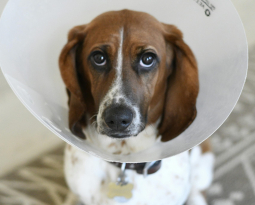As pet owners, we often prioritize providing our furry friends love, proper nutrition, and regular exercise. However, dental care is one aspect of their well-being that is sometimes overlooked. Just like humans, pets can suffer from dental issues that can impact their health. In this quick guide, we’ll explore the ABCs of pet dental care to help you understand the importance of maintaining healthy smiles for your four-legged companions.
A is for Awareness
One of the first steps in ensuring your pet’s dental health is to be aware of potential dental problems. Knowing what to look for is huge if you’re going to take prompt care of anything that develops. Keep an eye out for symptoms such as bad breath, swollen gums, difficulty eating, pawing at the mouth, or a change in behavior. If you notice any of these signs, consult your veterinarian immediately. Early detection can prevent dental issues from escalating into more severe problems.
B is for Brushing
Yes, you read that right – brushing your pet’s teeth is a key part of their dental care routine. It may seem like a daunting task. After all, how do you get your dog to let you jam a toothbrush in their mouth? But with patience and the right approach, it can be a positive experience for you and your pet. Use a pet-friendly toothbrush and toothpaste, as human products can be harmful to them. Start slow, allowing your pet to get used to the sensation of having their teeth brushed. It may just be a single tooth at a time for a while, or even just holding a bit of the pet toothpaste on the brush and letting them get used to it being near their mouth. Slow and steady wins this race. Regular brushing helps remove plaque and prevents tartar buildup, promoting overall oral health.
C is for Chew Toys
Chew toys serve a dual purpose in pet dental care. Not only do they provide entertainment and get out potentially destructive tendencies, but they also help keep your pet’s teeth clean. The chewing action can reduce plaque and tartar buildup, acting as a natural toothbrush. Depending on the type of food you feed your pet, they may be lacking a good chew. Choose chew toys (say that five times fast!) that are appropriate for your pet’s size and breed, ensuring they are durable and safe. Additionally, consider dental chews specially designed to promote oral health – your pet will thank you for the treat, and their teeth will appreciate the care.
D is for Dental Check-ups
Regular dental check-ups with your vet are necessary for maintaining your pet’s oral health. During these visits, your vet will examine your pet’s teeth and gums, checking for any signs of disease or trouble. Professional dental cleanings may be recommended to remove tartar and plaque that regular brushing might miss. Still, these should be a minimum if you stay on top of brushing and chewing toys. Every pet is different, though, so don’t neglect the check-ups! These check-ups are an excellent opportunity to discuss any concerns or questions about your pet’s dental care.
E is for Eating Right
Just like in their people, nutrition is vital to pets’ overall health, including their dental well-being. Feed your pet a balanced diet that supports their dental health. Specially formulated pet foods and treats are designed to promote good oral hygiene. These products often include ingredients that help reduce plaque and tartar buildup, contributing to healthier teeth and gums. Consult your veterinarian to find the most suitable diet for your pet’s needs; they can vary by breed, age, weight, and more.
F is for Flossing
Surprised? Flossing is an option for some pets, especially those prone to dental issues. There are dental floss products designed specifically for pets, allowing you to clean between their teeth. However, it’s essential to approach flossing cautiously and consult your veterinarian for guidance. Some pets may not tolerate flossing, so introduce it gradually and with positive reinforcement, just like when you introduce brushing.
By staying aware of potential dental issues, incorporating brushing into your routine, providing appropriate chew toys, scheduling regular check-ups, offering a nutritious diet, and considering flossing when necessary, you can contribute to your pet’s overall well-being. Remember, a healthy mouth leads to your pet’s happy and vibrant life, ensuring many more years of joyful companionship. If you have any specific concerns or questions about your pet’s dental care, don’t hesitate to contact your veterinarian for personalized advice and guidance. Your pet’s smile is worth it!







